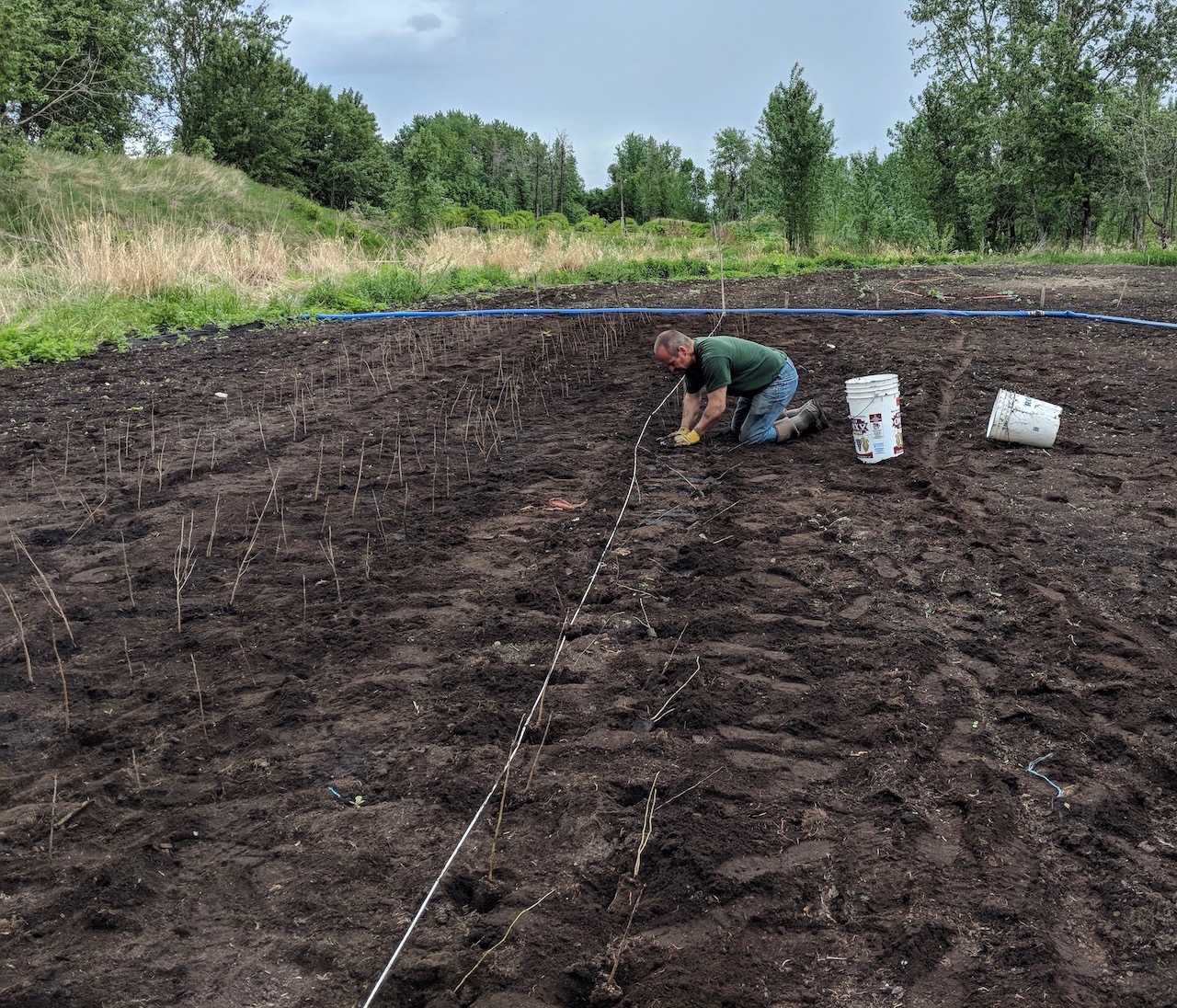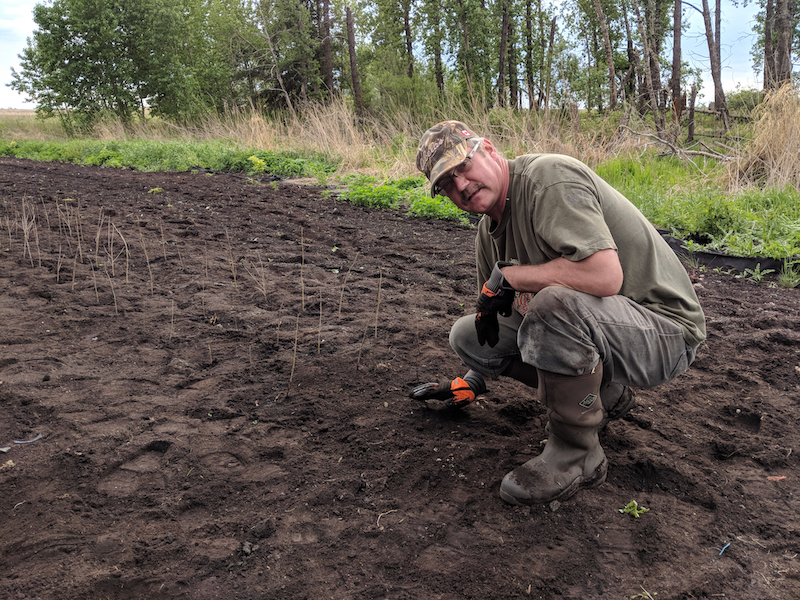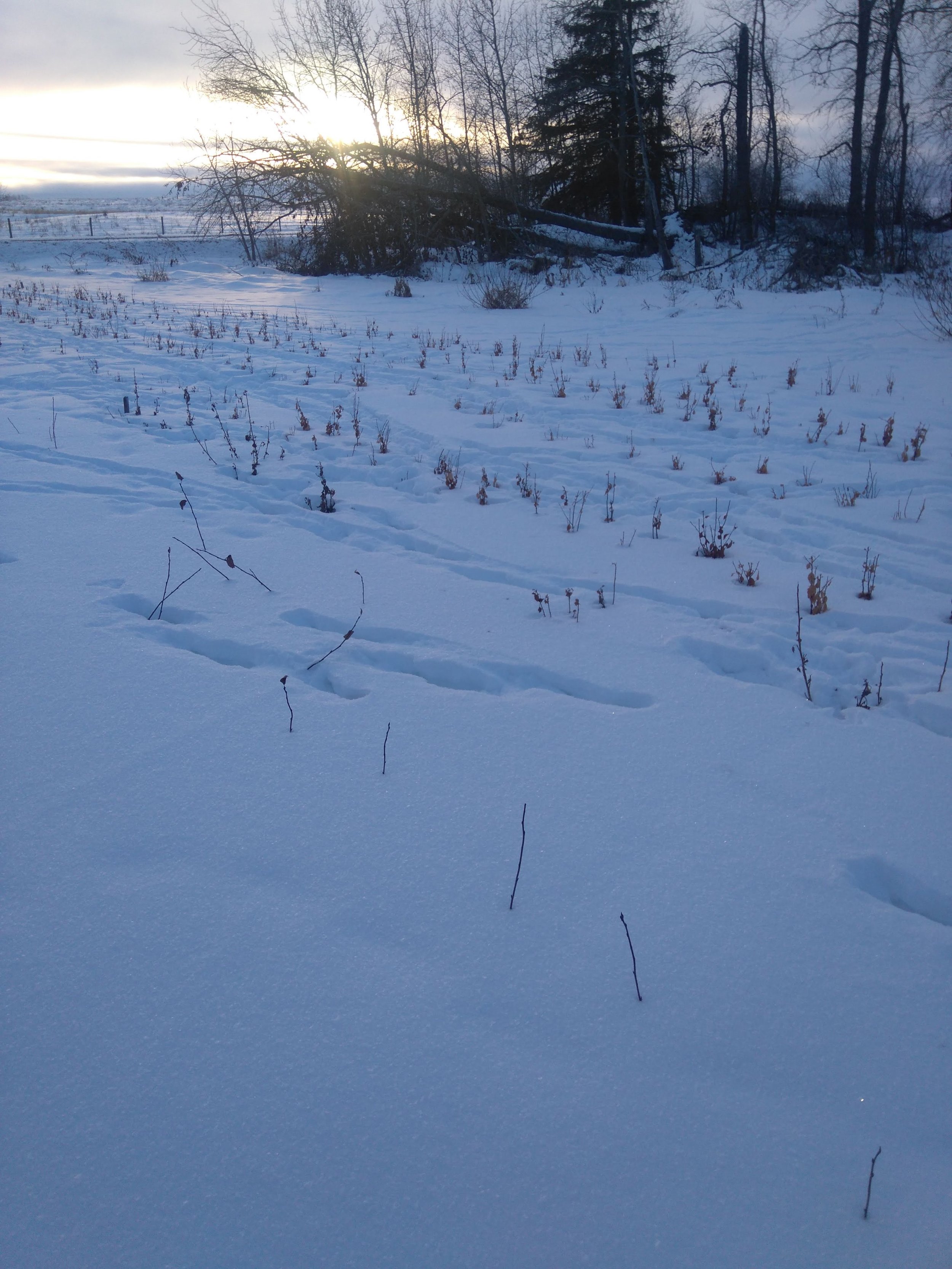Part of the Bee and Thistle Winery’s offerings will be Cherry wine, made from Ravensfield’s Carmine Jewel Cherries.
Why Did Collin Choose Carmine Jewel?
Choosing which type of Cherry tree to grow was an easy decision. In 1999, Rick Sawatzky from the University of Saskatchewan’s (U of SK) Department of Plant Sciences, College of Agriculture and Bioresources Department, successfully bred a collection of sour cherries from Europe and Minnesota to create the first Sour Cherry introduced by the U of SK, the Carmine Jewel. Bob Bors, also from the U of SK’s breeding program, further refined the fruit by crossing it with both Saskatchewan and Ontario berries while developing a protocol for tissue culture propagation. The result was a hardy deciduous shrub and hybrid variety of Cherry tree that produces dark, black cherries with small pits that are excellent for wine-making.
A varietal study was performed at U of SK in 2010 among the six varieties available at that time. There is also a Cherry Grower’s Guide published by the University. Peter and Margie planted four of the six available varieties from U of SK’s breeding program in 2012 and 2013. The Carmine Jewel has consistently out-performed the Juliet, Valentine and Cupid (some call these the Romance Series) varieties, with superior fruit set, more intense and darker colour, high sugar and flavour profile, less splitting under adverse conditions (excess water and humidity), and less variable ripening times. After only 5 years, Peter and Margie were able to harvest (in 2017) over 100 pounds of cherries from only four plants, with the Carmine Jewel producing the most.
Because Collin’s cherries will be mechanically harvested in the field, consistent ripening within the plants is crucial and Carmine Jewel provides this positive attribute.
One negative of any of the dwarf sour cherries is that the blooms are susceptible to late spring frost, and that is what happened in 2018 in the test plot. Any growing enterprise takes calculated risk into account, and it will be predictable to have low fruit set due to late spring frost in approximately one year out of five.
Unfortunately, most of the original 1,000 Cherry trees that were planted in the spring of 2018 did not survive Saskatchewan’s brutally cold winter. Only 70 made it through. Although this is a huge loss to Ravensfield Farm, it is the reality of farming in remote, cold weather regions. Collin will move forward from this loss so watch for new plantings to happen soon.
“Rick’s advice on the care of sour cherries: “Grow them as a shrub with multiple stems rather than in tree form.” Bob concurs and adds: “Keep the soil around cherries weed-free.”
Follow along on our Ravensfield Farm blog for progress updates on the Cherry trees.
Bee and Thistle Winery Cherry Wine
Cherries take approximately three years to produce enough fruit to commercially harvest, so watch for our first batch of Cherry wine to be available in the fall of 2022. And we even have a name for it too - Ravensfield!





